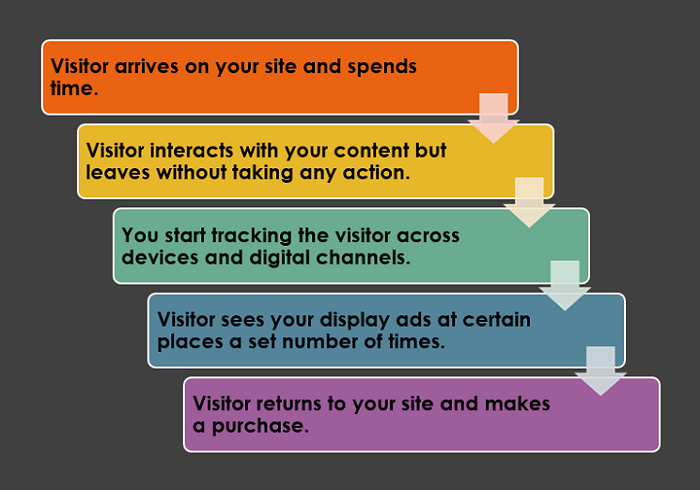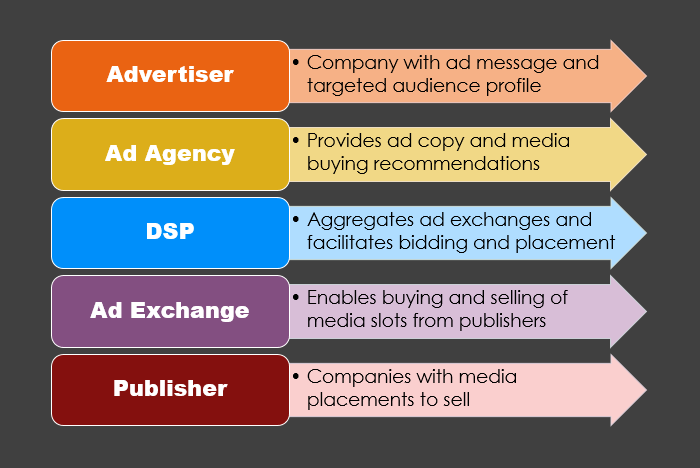We are all digital natives. The numbers prove it. Americans spend an average of 346 minutes on digital media per day. But, as digital marketers we must realize that though people spend time online, we can not mass advertise and expect amazing results.
Not all digital advertising is created equal. There is a mind-boggling range of advertising options online. From PPC, display, social media, and mobile advertising, to content marketing and sponsored content, each tactic can be a goldmine of opportunity in their own right.
This post will feature two fundamental digital advertising methods perfect for hooking the “nearly there” customers: remarketing and audience targeting.
Remarketing
Consider this scenario: you visit Amazon.com and search “spring wardrobe”. You exit the website but find the items you viewed follow you everywhere online. That is remarketing.
Remarketing targets individuals who have visited your website or app but have not made a purchase yet, using data gathered from a previous visit.
Remarketing can be done in many forms. From display to text ads, and videos to emails, remarketing spans a gamut of digital platforms. For example, a user becomes a candidate for a remarketing campaign when they:
- Visit your site and perform a “qualifying action” like searching for a product or clicking on an item
- Search for your brand, or a competing brand
- Interacted with your content
- Have interests on social media that are congruent with your product category
- Arrive on your site via SEM or SEO campaigns
The first step in remarketing is to select a digital advertising network. If you already have a Google AdWords account, you can start your remarketing campaigns across the entire Google network, including inside Gmail. Alternately, you can pick a tool like AdRoll, which opens up hundreds of ad networks including Facebook, Twitter, and other heavyweights.
While remarketing can convert potential customers into customers, not all users are thrilled about it. In fact, 68% of users actively dislike it. The trick lies in balancing:
- Who to target (lists)
- What you say (message testing)
- How often your ad appears (frequency)
- How long your ad appears (duration)
 Image created by author
Image created by authorMost remarketing tools have custom tracking codes to implement on your website. Once the code is implemented, you can drop a cookie on your visitors’ browsers, effectively tagging them as part of your target audience. These cookies serve up your ads to tagged users across the web as well.
Audience Targeting
Spray and pray marketing is no longer effective. Today you can zero in on consumers right based on zip code, and customize messaging to assist with the conversion process. This is the basis of audience targeting.
[pullquote]Audience targeting refers to the various ways in which brands can pinpoint the exact audience to which they will display an ad in order to maximize conversions.[/pullquote]
While search marketing revolves around keywords, user intent, and search data, display advertising hinges on predetermined audience segments that serve up an ad on a publisher’s site.
While remarketing campaigns depend on cookies, audience targeting works with more granular data. Further, advertisers can target users based on past searches or the content they browse. Facebook, for example, allows advertisers to target individuals based on the wealth of demographic data. Advertisers can target users who share generic interests that relate to your brand, those who have mentioned your brand on their timelines, or those who have browsed specific terms even outside of Facebook. Google also offers location-based targeting based on browsing activities.
Brands can use these inputs to develop segmented audience profiles for display campaigns. For example, say a campaign for Castrol engine oil will targets users interested in automobiles and visited auto maintenance websites over the past two days (among other parameters). Castrol can then feed audience profiles, ad copy, and budget into a demand-side platform (DSP), that connects to thousands of publisher sites via an ad exchange.
The DSP bids on serving up Castrol’s ad. The bid is based on whether a viewer matches Castrol’s pre-defined audience profile. If the user is a match and happens to be browsing, Autoweek for example, the bid for that ad impression will automatically appear, beating all other bids.
 Image created by author
Image created by authorHere, a targeted message is delivered to a user “with intent” and whose interests match the brand. Isn’t this case more likely to result in a conversion than a mass advertisement?
Over to You
If technology can narrow our target audience and deliver the right message at the right time, isn’t it up to us to jump at the opportunity? How are you remarketing and audience targeting? Is your organization still taking baby steps? Please share your experience in the comment area!
Featured image credit: Dave Meier, Picography.co




